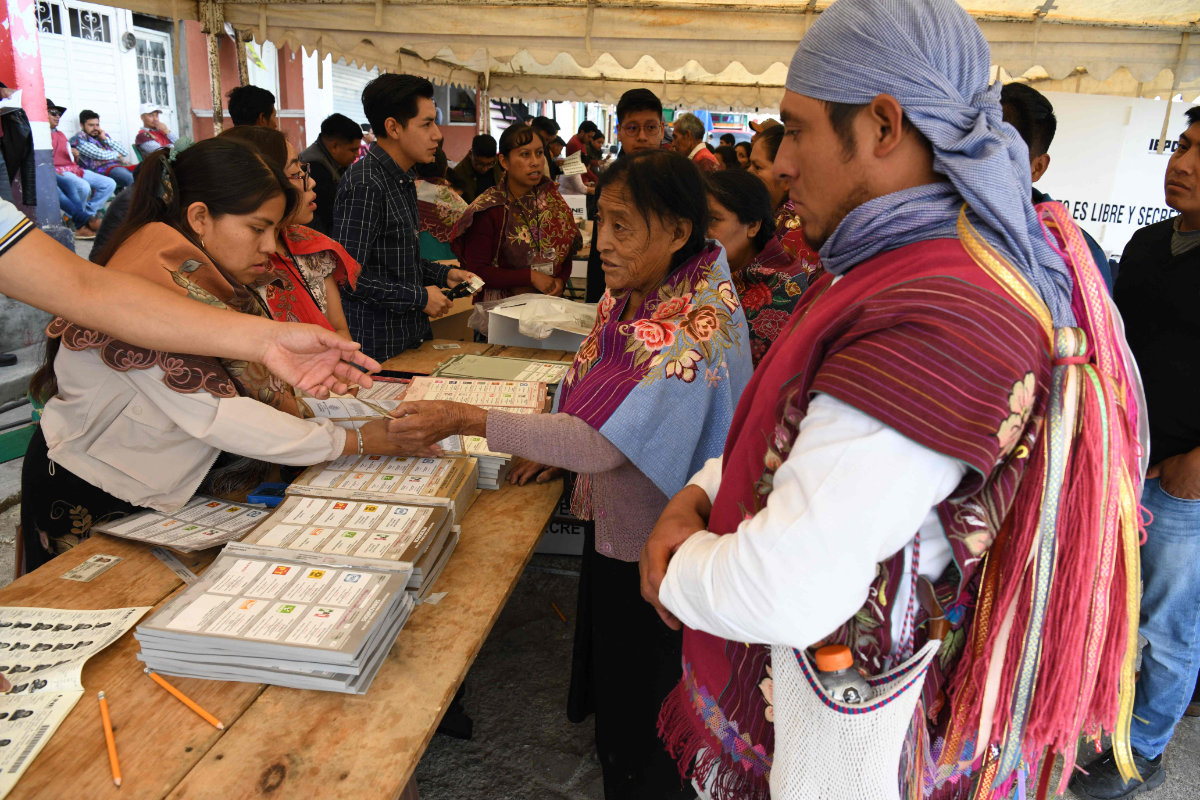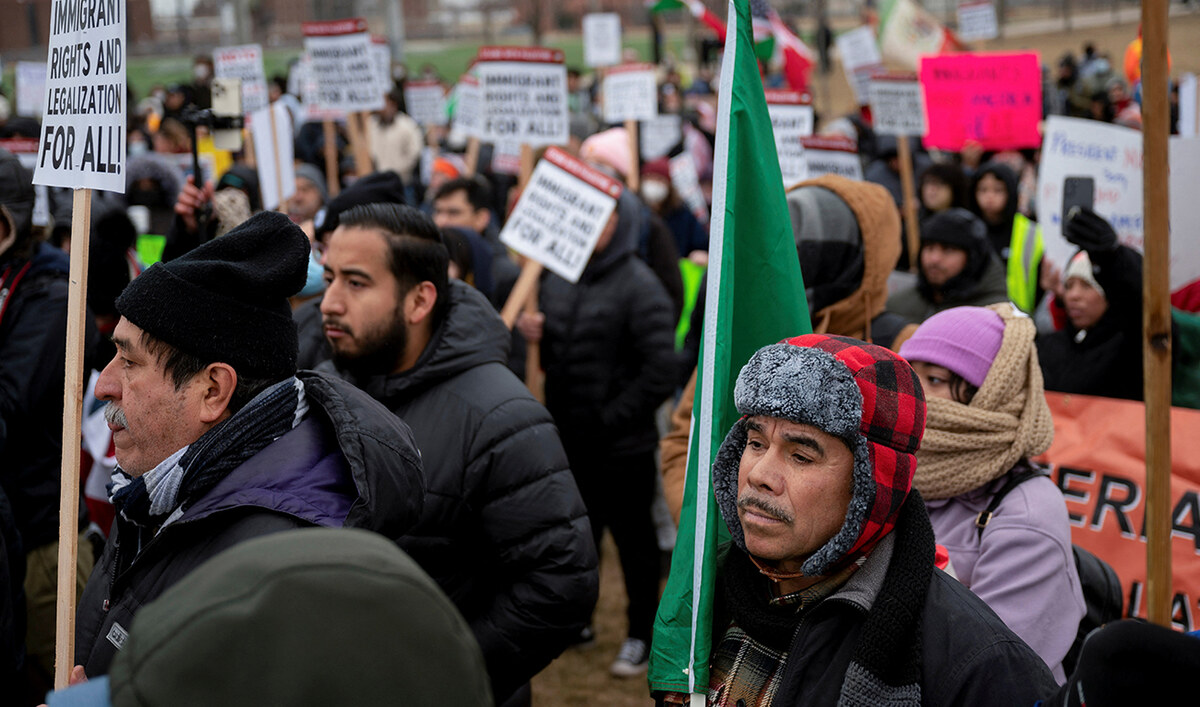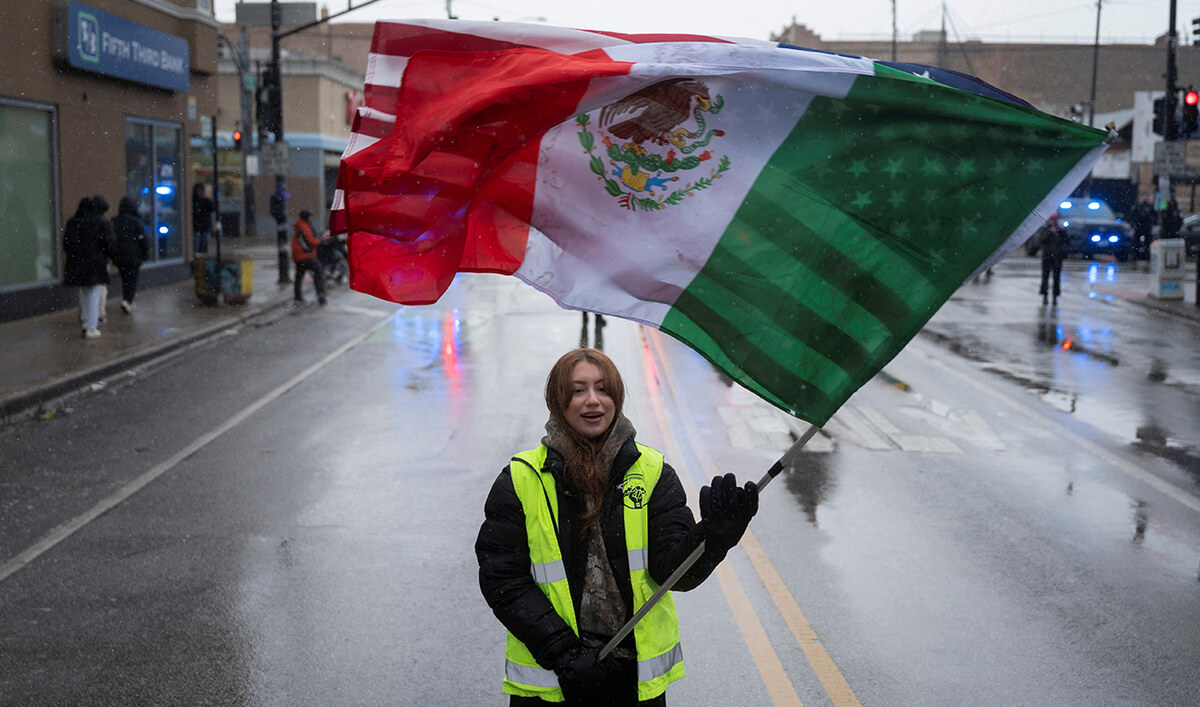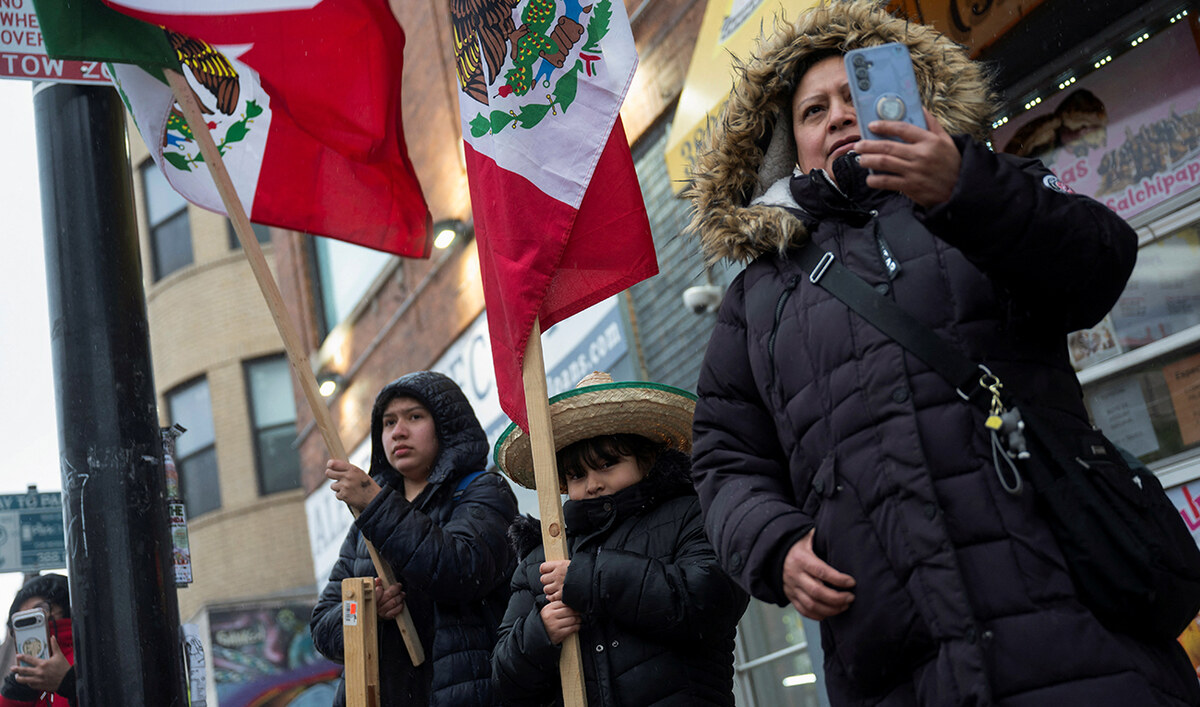MEXICO CITY: Two people were killed in violence at polling centers on Sunday in the midst of Mexico’s historic election expected to make leftist Claudia Sheinbaum, the ruling party candidate, the country’s first woman president.
Voting was suspended at one polling place after a person was killed in a shooting in Coyomeapan, a town in the state of Puebla, the state electoral authority reported in the afternoon. The state attorney general confirmed another death at a polling center in Tlapanala, also in Puebla.
Mexico’s largest-ever elections have also been the most violent in modern history, with the murders of 38 candidates, including a local candidate who was fatally shot on Saturday night. The deadly violence has stoked concerns about the threat of warring drug cartels to democracy.
Sheinbaum, who has led in opinion polls over her main competitor Xochitl Galvez, will be tasked with confronting organized crime violence, if elected. More people were killed during the mandate of outgoing President Andres Manuel Lopez Obrador than during any other administration in Mexico’s modern history.

A victory by either woman would represent a major step for Mexico, a country known for its macho culture. The winner, set to begin a six-year term on Oct. 1.
On her way to vote on Sunday morning, Sheinbaum told journalists it was a “historic day” and that she felt at ease and content.
“Everyone must get out to vote,” Sheinbaum, a physicist and former Mexico City mayor, said on local TV.
Galvez, a senator who represents an opposition coalition comprised of the Institutional Revolutionary Party (PRI), the right-wing PAN and the leftist PRD party, chatted with supporters before casting her ballot early Sunday.
“God is with me,” Galvez said, adding that she was expecting a difficult day.
Lopez Obrador, Sheinbaum’s mentor, greeted supporters and posed for photos as he walked from the presidential palace to vote with his wife.
There were long lines of voters outside polling places, even before they opened at 8 a.m. local time (1400 GMT), with some reports of delayed openings.
“It seems like a dream to me. I never imagined that one day I would vote for a woman,” said 87-year-old Edelmira Montiel, a Sheinbaum supporter in Tlaxcala, Mexico’s smallest state.
“Before we couldn’t even vote, and when you could, it was to vote for the person your husband told you to vote for. Thank God that has changed and I get to live it,” Montiel added.
Almost 100 million Mexicans are eligible to vote in Sunday’s election. Other positions up for grabs include Mexico City’s mayor, eight governorships and both chambers of Congress. About 20,000 elected positions are on ballots, the most in Mexico’s history.
The polls will close at 6 p.m. local time (0000 GMT on Monday). The first official preliminary results are expected late on Sunday.
‘Flooded with blood’
“The country is flooded with blood as a result of so much corruption,” said Rosa Maria Baltazar, 69, a voter in Mexico City’s upper-middle class Del Valle neighborhood. “I wish for a change of government for my country, something for a better life.”
Lopez Obrador has loomed over the campaign, seeking to turn the vote into a referendum on his political agenda. Sheinbaum has rejected opposition claims that she would be a “puppet” of Lopez Obrador, though she has pledged to continue many of his policies including those that have helped Mexico’s poorest.
Polls indicate that Morena, the ruling part of Lopez Obrador and Sheinbaum, is likely to fall short of securing a two-thirds majority in Congress. That would make it more difficult for Sheinbaum to push constitutional reforms past opposition parties, including the

Indigenous Tzotzil people vote during the general election in Zinacantan, Chiapas state, Mexico, on June 2, 2024. (AFP)
PRI, which ruled Mexico for about seven decades until democratic elections in 2000.
Challenges ahead for the next president also include addressing electricity and water shortages and luring manufacturers to relocate as part of the nearshoring trend, in which companies move supply chains closer to their main markets. The election winner also will have to wrestle with what to do with Pemex, the state oil giant that has seen production decline for two decades and is drowning in debt.
Both candidates have promised to expand welfare programs, though Mexico has a large deficit this year and sluggish GDP growth of just 1.5 percent expected by the central bank next year.
The new president will face tense negotiations with the United States over the huge flows of US-bound migrants crossing Mexico and security cooperation over drug trafficking at a time when the US fentanyl epidemic rages.
Mexican officials expect these negotiations to be more difficult if the US presidency is won by Donald Trump in November. Trump, the first US president to be convicted of a crime, has vowed to impose 100 percent tariffs on Chinese cars made in Mexico and said he would mobilize special forces to fight the cartels.
Sam Castillo, a 25-year-old dancer who lives between Oaxaca state and Mexico City, said he hoped Sheinbaum could be stronger on foreign relations than Lopez Obrador had been.
As he waited to vote at a polling place in the Florida district in the south of Mexico City, he said he felt better with the leftist Morena in power as part of the LGBT community.
“What we have seen with gender legislation, with marriage equality, for me it has to do with party,” Castillo said.





























